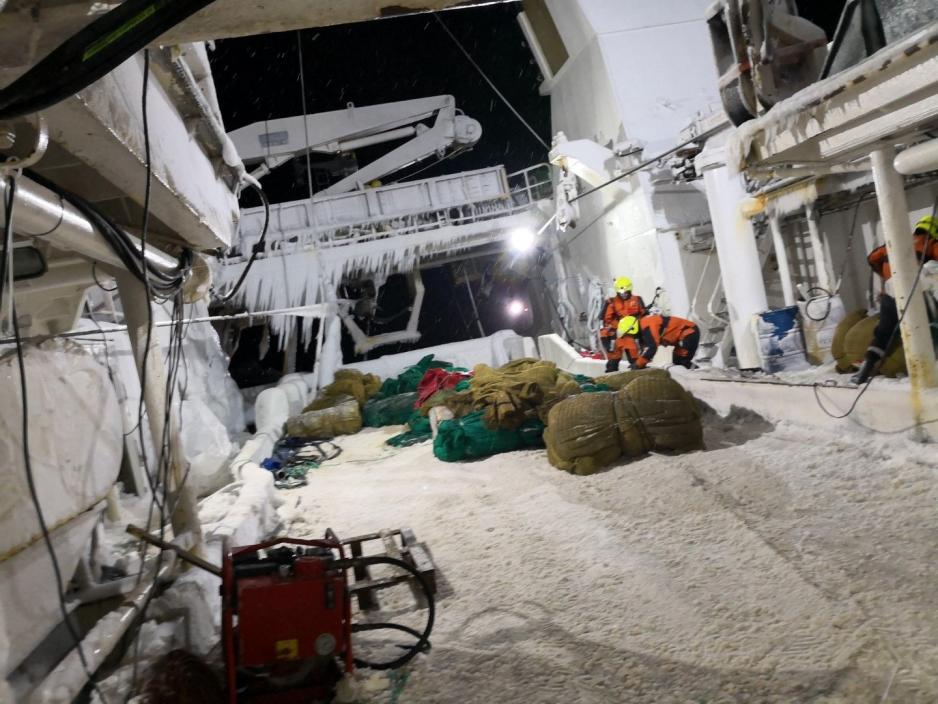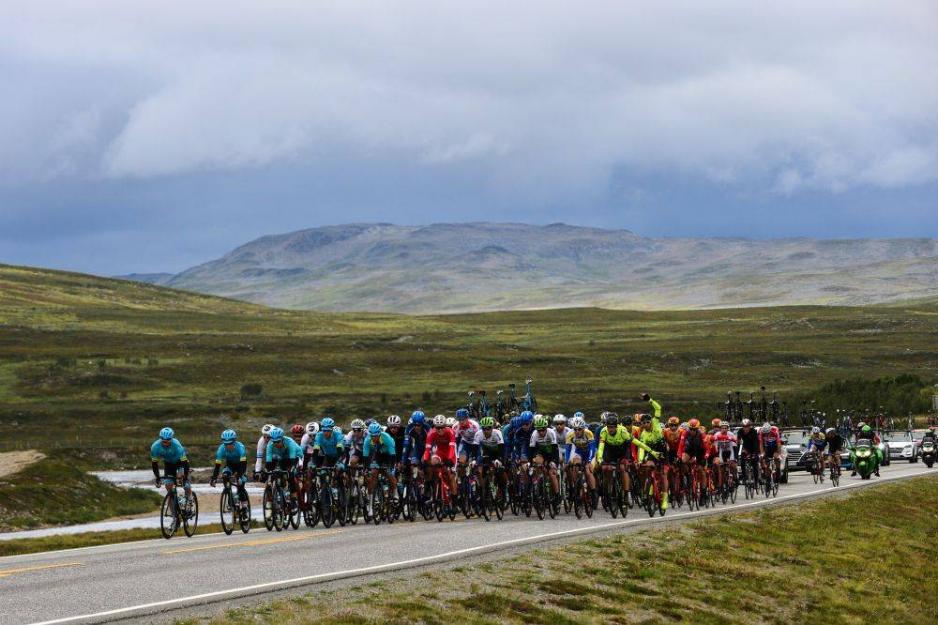EU Millions to High North Search and Rescue

Forliset av tråleren "Northguider" langt nord på Svalbard i mellomjula viste nok en gang hvor krevende søk og redningsoperasjoner i nordområdene kan være. Nå har EU bevilget 35 millioner kroner til et stort internasjonalt nettverkprosjekt som skal ledes av Hovedredningssentralen Nord-Norge. (Foto fra dekket på Northguider: Kystvakta/KV Svalbard).
The ‘Northguider’ incident in northern Svalbard waters during Christmas last year once again demonstrated how demanding search and rescue operations in the High North may be. The EU has now awarded NOK 35 million to a major international network project lead by the Joint Rescue Coordination Center North Norway. (Photo from ‘Northguider’: KV Svalbard/Norwegian Coast Guard)
The Joint Rescue Coordination Center North Norway will lead a major international network project about search, rescue and oil spill protection in the Arctic.
13 states and a total of 21 partners will be participating in the ARCSAR project, which is to be led by the Joint Rescue Coordination Center North Norway. The 5-year project is funded through the EU’s Horizon 2020 program, which has allocated NOK 35 million for its duration.
New international network
The main goal of the program is to establish an international network consisting of authorities, organizations and frontline actors in the Arctic in order to increase security and to face the challenges created by increased traffic and activity.
Cruise traffic, increasing petroleum activities and fisheries place heavy demands on both capacity and extent when it comes to search and rescue (SAR) operations in the High North.
More activity means new demands
This was fully demonstrated last Christmas, when the prawn trawler ‘Northguider’ ran aground in the Hinlopen Strait on Svalbard, and later when four people were caught in an avalanche in the Troms mountains on the Norwegian mainland a little later.
The JRCC North Norway holds the overall responsibility for coordination of SAR in the High North, whereas the Norwegian Costal Administration holds the responsibility for coordinating oilspill protection activities in Norwegian waters.
Increased and more diverse activity in the High North places new and heavier demands on both competence and capacity, and the ARCSAR project aims to focus on this through closer international cooperation.
Launched in Rome in February
The 13 participating countries are Iceland, the Faroe Islands, Great Britain, Ireland, Italy, the USA, Russia, Germany, Finland, Sweden, New Zealand, Canada and Norway.
The project will be launched in Rome in February and will be continued through a series of network gatherings and activities over the following five years.
One of the goals listed for the program is the desire to establish and support a new Arctic and North Atlantic network within safety and preparedness.
Increased understanding and prioritizing
This is also to lead to increased understanding of prioritized areas in safety and emergency preparedness.
The project aims to closely monitor developments in innovation and research on a.o. safety systems, emergency risk and crisis management, to identify critical obstacles and shortages in capacity, competence and infrastructure, and to reveal shared arenas as well as opportunities for increased joint interaction in emergency situations.
It is further stated that the ARCSAR project is to stimulate partners to allocate sufficient resources when incidents occur, and to further disseminate the outcomes of the project and activity improvements to relevant end users.
Tangible and cross-border
According to the information available about the project so far, this will, in turn, lead to tangible evidence of increased awareness level and the visibility of the project's activities being achieved as a result of the high-profile launch of the ARCSAR network.
There will also be an investigation of expressed trust in this network among the many who are involved in the frontline of SAR in the Arctic and the North Atlantic areas.
Achieving better cross-border coordination and interaction between coast guards, rescue coordination centers, other authorities, industrial groups, private operators, academia and volunteer organizations will also be important.
It will be worked on during the 19 joint network meetings and through the project’s academic anchoring.
Better sharing of information
The project will evaluate the necessity of a relevant list of immediate initiatives in innovation and knowledge exchange in the Arctic and North Atlantic areas, as well as explore opportunities for the increased sharing of information between and across practice groups through the network’s own exchange facilities, colleague learning and participant forums.
During the project, a catalogue containing results from joint exercises, summaries of shared experiences, network meetings and various case studies conducted during the project will be produced.
Norwegian participants are, in addition to the JRCC North Norway, the Coast Guard, the Coastal Administration, the Met Office, the shipowner grouping Maritim Forum North and Nord University.
International participants in this new network project include coast guards, joint rescue coordination centers, universities and cruise operators.

I 2018 gikk rittet i Finnmark, og den estimerte verdien av 1380 timer med TV-bilder - kringkastet i 190 land - er 270 millioner kroner. I august er det duket for nytt løp, og de første pedaltråkkene tas fra Lofoten.(Foto: ARN/Gautier Demouveaux).
